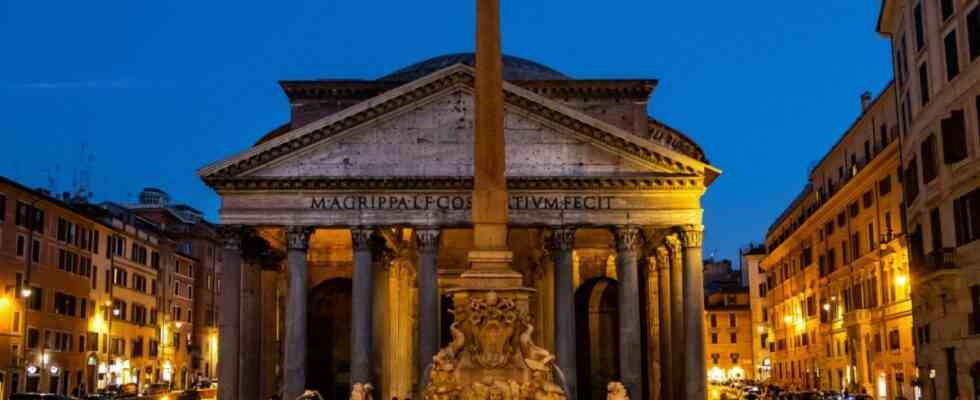The durability of ancient Roman concrete is legendary. Some ancient aqueducts are still used today to supply Rome with water. Thanks to the “opus caementitium”, the Roman concrete, the 1900-year-old Pantheon still stands today and is used as a Catholic church. For decades scientists have been trying to find out what makes Roman concrete so durable. Scientists from the USA are now reporting that they have solved the mystery: Small lumps of lime could have given the concrete and mortar stabilizing properties, writes the group led by Admir Masic from the Massachusetts Institute of Technology (MIT) in the journal Science Advances. Experiments with such a building material mixture revealed a kind of self-healing powers. If cracks form in the concrete through which water runs, calcareous minerals are formed that can fill the cavities again.
Over the past few decades, scientists have repeatedly studied Roman concrete and mortar. Among other things, they identified volcanic ash and rocks as well as seawater as ingredients that increased shelf life through various chemical reactions. However, millimeter-sized lumps of limestone were initially dismissed as impurities. “Ever since I first started working with ancient Roman concrete, I have always been fascinated by these components,” Masic is quoted as saying in an MIT release. The idea that the presence of the lumps of lime is only due to poor quality control has always bothered him. Masic and his team therefore tested the assumption that this unslaked lime has a specific function in the concrete mix.
The ancient Roman concrete production was more environmentally friendly than today’s
To do this, they examined mortar from the walls of the ancient town of Privernum near today’s city of Priverno, south-east of Rome. Thus, Roman mortar and concrete consisted of sand, volcanic ash, chunks of volcanic rock, water, and lumps of quicklime—and sometimes slaked lime as well. The reaction of the water with the surface of the unslaked lime (calcium oxide) produces slaked lime (calcium hydroxide), which is accompanied by heat development of up to 60 degrees Celsius.
The slaked lime, in turn, reacts with water and sand to form a cement-like binder, releasing even more heat. The scientists speak of “hot mixing”. On the one hand, these reactions bind the rock fragments more firmly into the cement matrix. On the other hand, the curing and setting times are significantly reduced, explains Masic. With modern concrete, on the other hand, the aggregates should not react with the cement if possible.
Based on these findings, Masic and colleagues created concrete mixtures with and without lime lumps. They split the hardened concrete and put the parts together in such a way that a gap of 0.5 millimeters remained. Then they let water run through this gap. While the water still flowed through the gap almost unhindered after 30 days in concrete without lime lumps, almost no water came through the concrete with lime lumps. Because the crack in the concrete had also split the lime lumps, and the unslaked lime had reacted with the water to form slaked lime, mineralizing and filling the gap.
These formulations could also potentially improve the durability of 3D printed concrete formulations, says Masic. In addition, these mixtures are significantly more environmentally friendly than today’s cement production, which is responsible for eight percent of global carbon dioxide emissions. Masic is also working on a concrete that can absorb the greenhouse gas carbon dioxide from the air.

